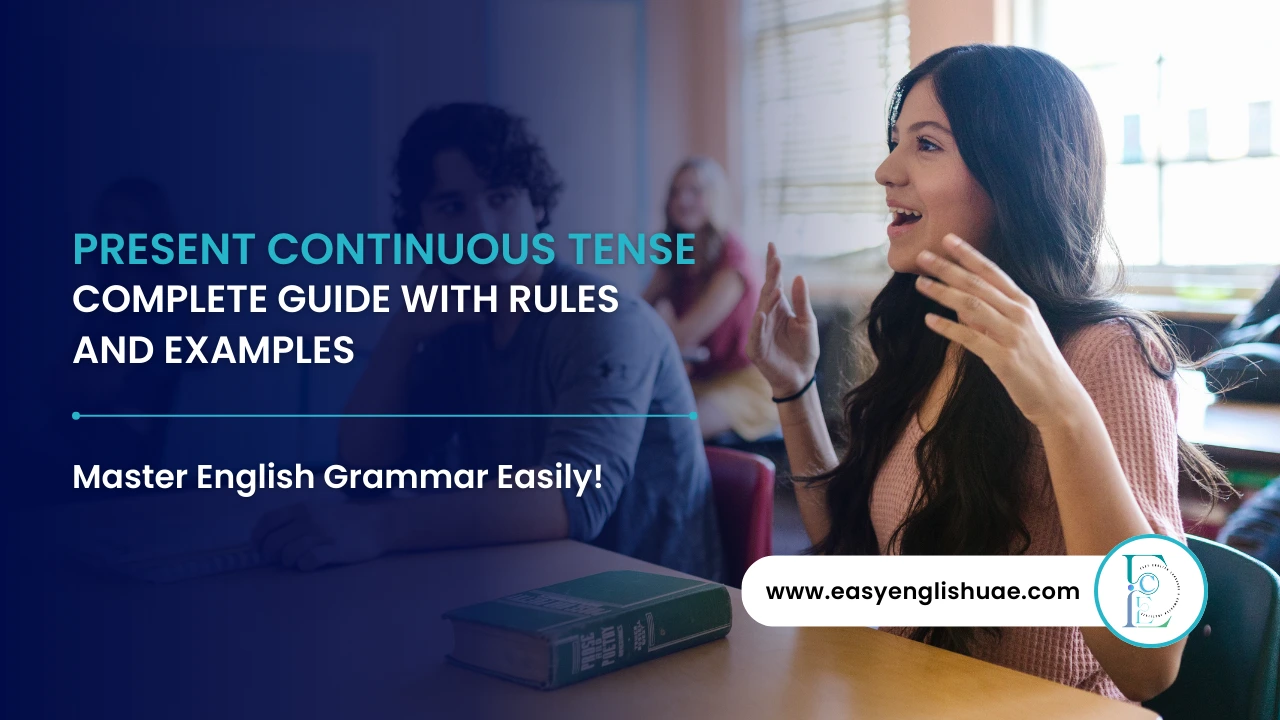

Learning English grammar becomes easier when you master the present continuous tense. This essential tense helps you talk about actions happening right now.
Whether you’re describing what you’re doing at this moment or talking about ongoing activities, understanding the present continuous tense is crucial. It’s one of the most frequently used tenses in everyday English conversation.
This guide will teach you everything about the present continuous tense. You’ll learn the rules, structure, and how to use it correctly in different situations.
The present continuous tense shows actions happening right now. We use it to describe what someone is doing at this exact moment.
For example, if someone asks “What are you doing?”, you might answer:
These actions are taking place at the present time. They started recently and are still continuing.
The present continuous tense is also called the present progressive tense. Both names describe the same grammatical structure.
The structure of the present continuous tense follows this simple pattern:
Subject + Helping Verb (is/am/are) + Main Verb + -ing + Object
This formula works for all present continuous sentences. Once you memorize it, creating sentences becomes much easier.
Here are clear present continuous tense examples using the basic structure:
Each example follows the same pattern. The helping verb changes based on the subject, but the structure remains the same.
The helping verb changes depending on your subject:
Use “is” with singular subjects:
Use “are” with plural subjects:
Use “am” with “I”:
Take the base form of any verb and add “-ing”:
This rule applies to most English verbs. Some verbs have spelling changes, but the basic rule stays the same.
Present continuous temporary actions examples often include time expressions:
These phrases show that the action is happening now. They make your sentences clearer and more specific.
Making questions is simple. Move the helping verb to the beginning of the sentence.
Statement: He is reading a book
Question: Is he reading a book?
Statement: You are listening to music
Question: Are you listening to music?
Statement: They are going to the party
Question: Are they going to the party?
Remember to add a question mark at the end. This shows that you’re asking a question, not making a statement.
Creating negative sentences is equally easy. Add “not” after the helping verb.
You can also use contractions like “isn’t,” “aren’t,” and “I’m not” in casual conversation.
The most common use describes current activities:
We also use it for temporary actions or situations:
Try to explain present continuous tense using these examples:
This practice helps you understand the pattern. The more you practice, the more natural it becomes.
Don’t forget the helping verb. Always include is, am, or are in your sentences.
Don’t use present continuous with certain verbs like “know,” “like,” or “want.” These are state verbs, not action verbs.
Always add -ing to the main verb. Without it, you’re using a different tense.
The present continuous tense is essential for describing current actions and temporary situations. By following the simple structure and rules, you can create clear, correct sentences.
Remember the basic formula: Subject + is/am/are + verb-ing + object. Practice making positive statements, questions, and negative sentences.
Start using the present continuous tense in your daily conversations. The more you practice, the more confident you’ll become with English grammar.



WhatsApp us